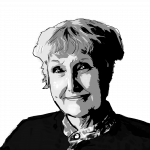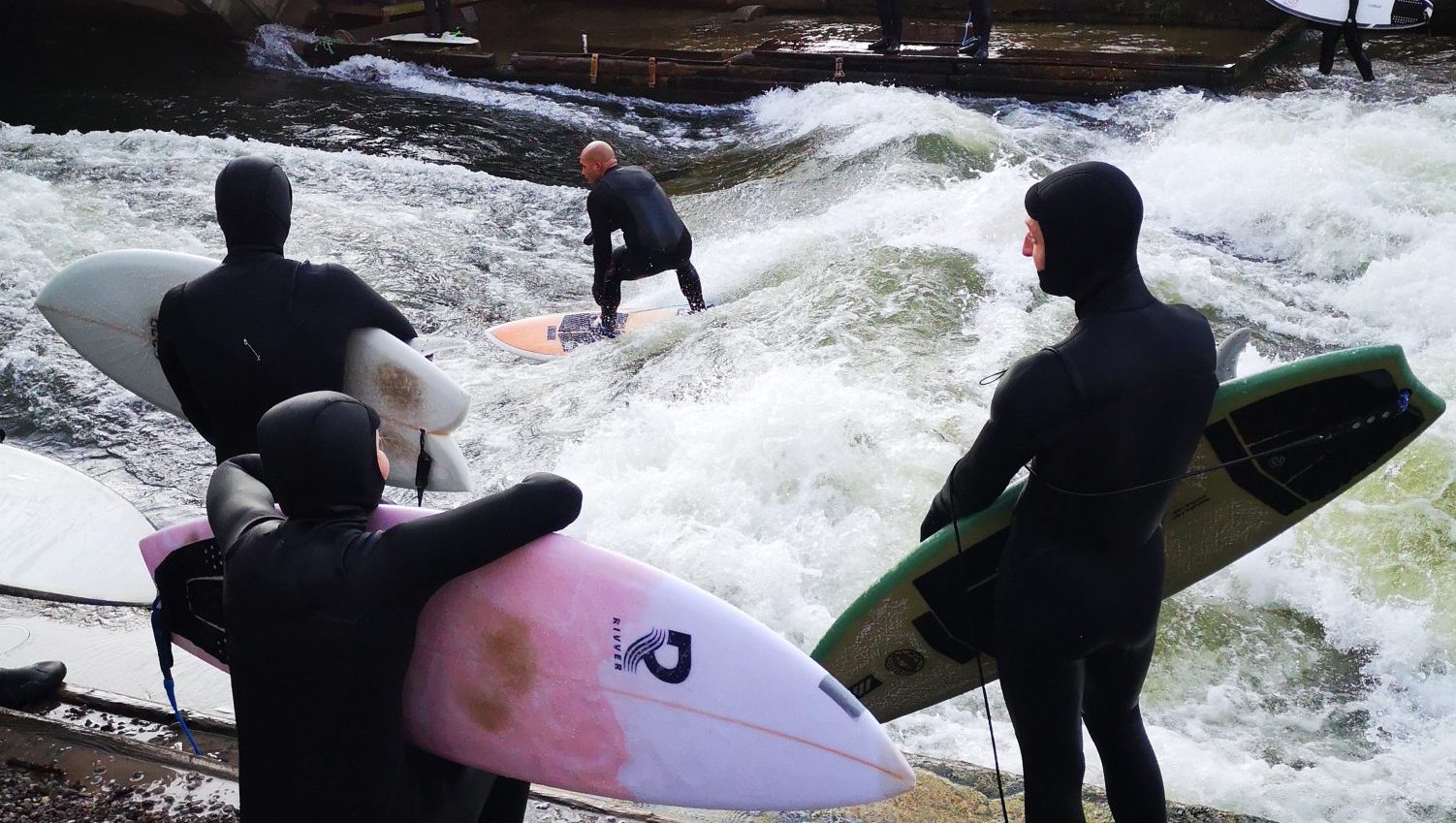It is 10.30pm one March evening in Munich and I’m returning to my hotel after a party at the Haus der Kunst. Passing the Englischer Garten that adjoins the gallery on its eastern side, I pause at the Eisbach River, which is charging through the twin arches of the stone bridge beneath me and vanishing into the park.
The river is glassy, the colour of obsidian, and frothed with white. Two surfers catch my eye. By day, the riverbanks are full of them, but tonight there are only two and in their wetsuits they resemble a pair of sleek otters, as perfectly at home in the nocturnal wrinkles of water as they are on the muddy root-caked land.
They take it in turns to leap on to a wave and cling to a standing position on their surfboards – a balancing act between the water’s chop and bounce and their own stillness. Then the wave swallows them up, bearing them downstream, the river spitting out their surfboards like leaves, fallen from Englischer Garten trees.
The roar of the river competes with the traffic on Prinzregentenstrasse behind me, reminding the city’s residents of the Eisbach’s eccentric gift: a surfing wave in landlocked Bavaria. The people of Munich are unlikely to forget.
“The community still tries to protect the spot,” retailer Benedikt Becht of Riot Surfboards tells me.
He runs one of 18 surf-related shops in the city. “But now it’s getting more and more popular and kinda mainstream. In the beginning, when we started building boards [in 2012] we had around 500 real-core surfers, now we definitely have more than 3,000.”
The artificial standing wave, which is about half a metre tall, was created in 1972 when concrete blocks were installed under the bridge to block the river’s current. Eisbach means “icy brook” and the river itself is a man-made branch of the Isar that flows down from the Bavarian Alps.
The next morning, I’m back on the bridge; there are about 70 onlookers taking pictures and filming. Among those waiting in line, I recognise Tao Schirrmacher. “The spectators and the wave are as closely interlinked as Munich’s U-Bahn (railway line) is with its platforms,” he said in an interview with Simply Munich. “The Eisbach is a place where tourists meet locals, and surfing pros from all over the world meet complete beginners.”
However, the concrete baffles, the speed of the river’s current and its relative shallowness actually makes it unsuitable for beginners. Katrina from Heidelberg has two years’ experience and is also one of the few female surfers. “It’s really difficult to stand today because there are some bumps in the water. I think it rained and it’s a high water level now, which is difficult for beginners.”
River-surfing requires different surfboards and techniques to the sea, as Sven from Hamburg explains. “You have really fast water tipping into slow water. When the wave appears, you’re riding against the current, the force of gravity takes you down, the force of the water brings you up and you’re in the balance between these two forces. It’s totally different from the ocean.”
Benedikt of Riot Surfboards elaborates: “In ocean-surfing you surf mostly back-footed. On the Eisbach River wave you surf a bit more front-footed. The surfboards are significantly shorter, too, because you jump directly on to the wave, so you don’t need the volume to paddle.”
March is the best time for river-surfing, and that coincides with the blooming of the yellow forsythia in the Englischer Garten. On one wall of Haus der Kunst there’s a poster featuring two barefooted surfers seated inside the gallery. Some of the tricks I’ve witnessed here would not look out of place as performance art. When I return to the UK and switch on the BBC news, I find the surfing has followed me home. There, on the River Severn, chasing its tidal bore, are the familiar amphibious figures in their wetsuits, holding their surfboards like shields, waiting in line to ride that wave.
Deborah Nash is a journalist and writer. She is currently writing a zine on kitchen furniture




